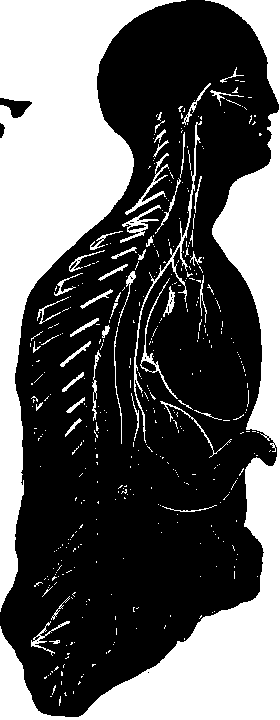156. The Most Moderate Exercise Of The Mental Faculties
Description
This section is from the book "Animal Physiology: The Structure And Functions Of The Human Body", by John Cleland. Also available from Amazon: Animal Physiology, the Structure and Functions of the Human Body.
156. The Most Moderate Exercise Of The Mental Faculties
The Most Moderate Exercise Of The Mental Faculties, the mere continuance of consciousness, appears to involve exhaustion of the brain, and necessitates restoration of its vigour by sleep. Of the physical relations of sleep very little is known. It has been pointed out that the circulation in the brain is less active during sleep than at other times, but this is not proved to be constant; nor, supposing it to be so, does it sufficiently explain the state of unconsciousness. It may, however, be fairly assumed that the passage of the brain into a condition of inactivity, is the cause of the cessation of mental action. Just as some muscles, for example the fibres of the heart, move ceaselessly, while others require rest, so some of the nervous centres, including the ganglia which immediately govern the heart, are in continual action, while others, including the cerebral hemispheres, require considerable pauses for the renewal of their activity.
Dreams, like sleep, are only imperfectly understood. Their main peculiarity consists in a certain amount of mental activity existing, with complete or almost complete cessation both of impressions from the organs of sense, and of voli-tionary impulses to the muscles. In these circumstances, the pictures of memory and imagination come into the foreground, unrepressed by the stronger representations of sense, and assume the appearance of reality. One idea suggests another, and each one which is sufficiently vivid has in turn the semblance of reality;, and from this arise the strange shifting of scenes and curious confusions with which every one is familiar.
Apparitions, and other illusions from mental causes, are to be accounted for in a similar way. Many well authenticated instances are on record of figures appearing to persons otherwise perfectly sane. Among them may be mentioned the case of Nicolai, the Berlin bookseller, who saw persons in the room with him, when he knew that there was in reality no one present; but so far from being disturbed by these apparitions, made them the subject of study and recorded the details. In his case, they were traced to the neglect of a customary bloodletting, and disappeared after leeching. In such rare occurrences there is the same prominence of a mental picture as occurs in dreams; but, in dreams, that prominence results from the absence of sensations originated by contact with the outer world; while, in apparitions, it is the consequence of some pathological action within the brain.
In somnambulism, the mind is likewise occupied as in a dream; but the ideas which possess it, while others have been excluded, become so strong that the apparatus of voluntary movement and of the senses are thrown into action in an automatic fashion, the attention being directed to the all absorbing imagination. The mesmeric trance is a very similar condition, in which the will is altogether governed by the ideas impressed by another person.

Fig. 108. Sympathetic System of Nerves, a, Superior cervical ganglion, from which the sympathetic chain is continued regularly downwards as far as the coccyx, where it communicates with its fellow. It is likewise continued irregularly in the cranium. At b, the chains of opposite sides communicate behind the upper incisors; c, cardiac plexus; d, solar plexus; e, hypogastric plexus; f, renal and supra-renal plexus. 1 and 2, First and second divisions of fifth cranial nerve ; 3, vagus nerve; 4, first spinal nerve.
Continue to:
